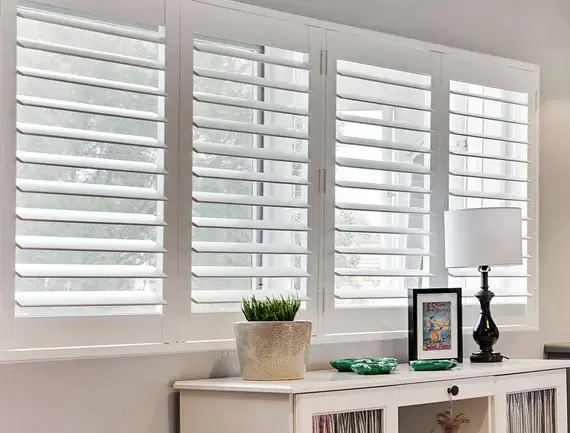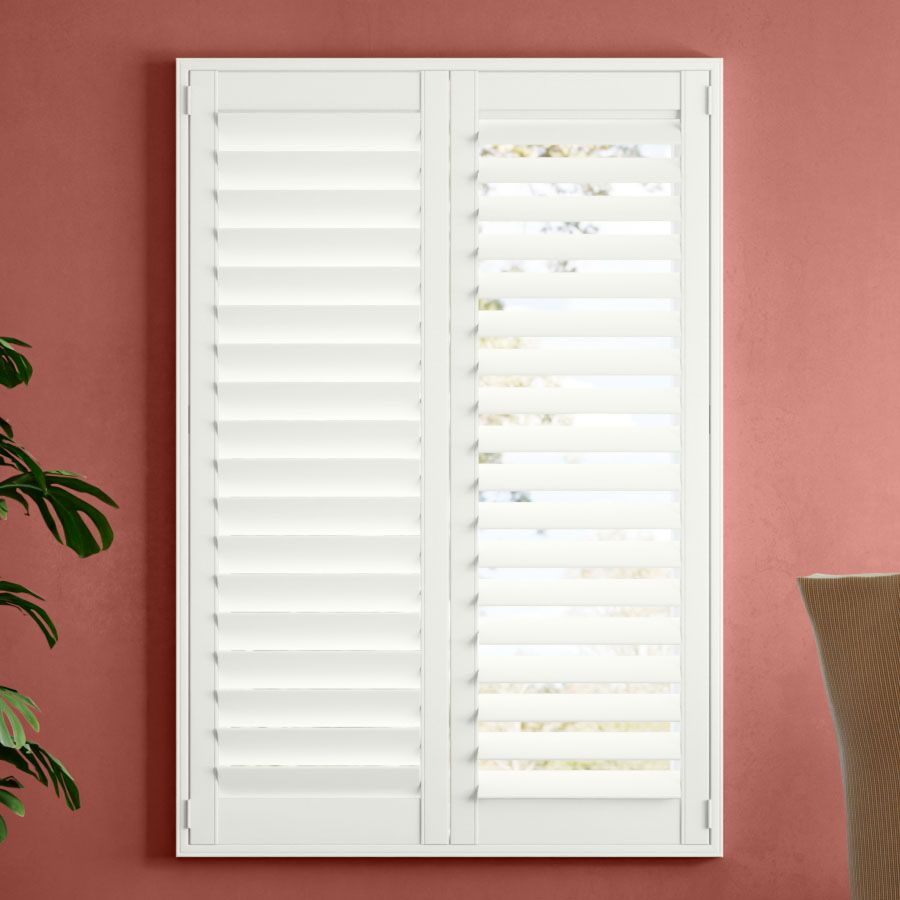Update with Shutters Phoenix: Sturdy and Classy Layouts
Update with Shutters Phoenix: Sturdy and Classy Layouts
Blog Article
Recognizing the Distinctions Between Blinds and Shutters for Your Home Window Treatment Demands: A Comprehensive Guide to Aid You Choose the very best Option
When considering window treatments, understanding the distinctions between shutters and blinds is essential for making an educated selection that aligns with your useful and aesthetic requirements. Blinds provide adaptability and cost, while shutters exhibit classic sophistication and supply boosted insulation.
Overview of Blinds
When thinking about home window therapies, blinds are frequently a prominent option due to their flexibility and functionality. They are available in numerous products, including wood, faux timber, aluminum, and vinyl, allowing home owners to pick alternatives that match their interior decoration while meeting practical needs. Blinds are designed to regulate light and privacy efficiently; their slatted framework can be adapted to permit varying levels of sunlight, making them ideal for various rooms and tasks.
Additionally, blinds are available in a selection of styles, such as vertical, horizontal, and mini blinds, offering home owners with enough choices to fit their particular home window dimensions and shapes. Their simplicity of installation and upkeep further enhances their charm; most blinds can be cleaned with a simple dusting or clean down, guaranteeing they continue to be eye-catching over time.
Moreover, modern innovations have led to the introduction of motorized blinds, offering convenience and the ability to regulate them remotely. This technological improvement caters particularly well to those seeking boosted capability. Generally, blinds serve as a functional and trendy window treatment alternative for a variety of domestic and industrial applications.

Summary of Shutters
Shutters are a highly concerned window treatment alternative that integrates aesthetic allure with phenomenal performance - motorized blinds phoenix. Available in numerous styles, consisting of vineyard, conventional, and café, shutters can boost the character of any kind of space while providing efficient light control and privacy. Created from materials such as timber, composite, or plastic, they are designed to stand up to wear and tear, making them a durable selection for homeowners
Among the primary benefits of shutters is their versatility. They can be custom-fitted to virtually any kind of home window sizes and shape, permitting a tailored look that enhances your home's design. Additionally, shutters provide outstanding insulation buildings, helping to regulate indoor temperatures and possibly reducing energy expenses.
Shutters are also simple to preserve, needing only occasional dusting and cleaning up to maintain them looking beautiful. Their durable layout means they are much less most likely to be damaged contrasted to various other home window therapy alternatives. Shutters can increase building worth, as they are commonly viewed as a costs feature by potential purchasers. In recap, shutters supply a classic option that stabilizes appeal, functionality, and long-lasting investment capacity for any window treatment requirements.
Key Differences

An additional key distinction is the method of procedure. Blinds run through a system of cables or wands that tilt or elevate the slats, making it possible for customers to change light levels quickly. Shutters, nevertheless, feature hinged panels that can be opened up or shut completely or gotten used to manage light and privacy.
Aesthetically, blinds usually use a modern-day, streamlined look, while shutters lend a traditional, timeless attract interiors. In addition, shutters can this link enhance insulation due to their strong building and construction, which blinds might not provide. Lastly, setup and maintenance differ substantially, as shutters often require expert setup and even more maintenance compared to the fairly uncomplicated installation of blinds. Understanding these differences can assist house owners make informed decisions tailored to their specific demands.
Advantages And Disadvantages
Blinds are typically preferred for their adaptability and affordability. Additionally, blinds are reasonably simple to install and can be readjusted to control light and personal privacy efficiently.
On the various other hand, shutters are renowned for their toughness and aesthetic appeal - window shades phoenix. Made generally from wood or composite products, they use excellent insulation and can enhance a home's visual charm. Shutters usually require less maintenance and can offer an added layer of protection. Their preliminary expense is typically higher than blinds, which may hinder budget-conscious homeowners. Installment can also be much more intricate, often needing specialist aid.
Choosing the Right Alternative
Choosing the ideal home window treatment for your home includes cautious consideration of different elements, including capability, appearances, and budget. Blinds and shutters each offer distinctive advantages and disadvantages that can influence your choice.
Performance is critical; consider just how much light control and personal privacy you prefer. go to website Blinds normally enable more convenience in changing light levels, while shutters provide durable insulation and soundproofing residential or commercial properties. If energy efficiency is a top priority, shutters might be the far better selection because of their strong building.
Appearances additionally play an important role. Blinds are available in various products and styles, making them suitable for modern-day insides. On the other hand, shutters exude a traditional beauty, improving the general architectural appeal of your home.
Budget restrictions are similarly vital. Blinds usually use an extra affordable first financial investment, whereas shutters can be pricier but may supply lasting worth through sturdiness and power cost savings.
Inevitably, the right option depends upon your certain demands and choices - window shades phoenix. By reviewing these variables meticulously, you can choose a window therapy that integrates with your way of living, improves your space, and fits within your economic criteria
Final Thought
To conclude, choosing in between blinds and shutters needs mindful factor to consider of various factors, consisting of performance, aesthetic choices, and budget plan constraints. Blinds provide adaptability and affordability, making them appropriate for contemporary styles, while shutters provide an ageless sophistication and enhanced insulation, albeit at a greater cost and installation complexity. Ultimately, the selection depends upon specific needs and the desired ambiance of the living room, making sure that the picked home window therapy aligns with both stylistic and functional demands.
When taking into consideration window treatments, comprehending the differences between shutters and blinds is vital for making an informed selection that straightens with your aesthetic and functional requirements. Blinds use adaptability and cost, while shutters exhibit timeless refinement and give boosted insulation.Various elements distinguish blinds and shutters as home window therapy options, each catering to various visual choices and useful needs. Furthermore, shutters can enhance insulation due to their strong building, which blinds may not provide. Blinds use versatility and cost, making them appropriate for contemporary styles, while directory shutters provide a timeless sophistication and enhanced insulation, albeit at a higher cost and setup intricacy.
Report this page